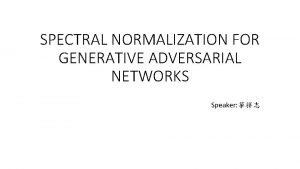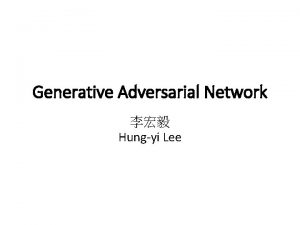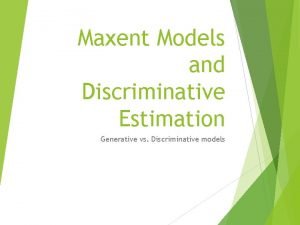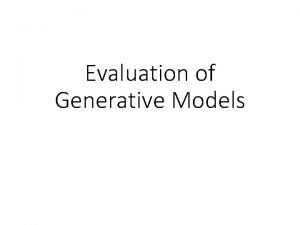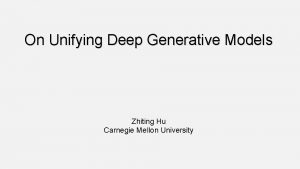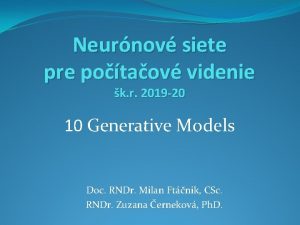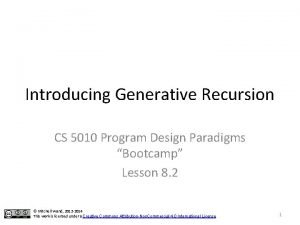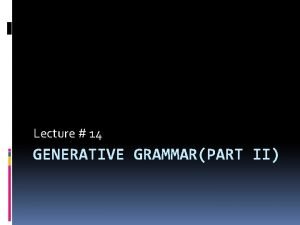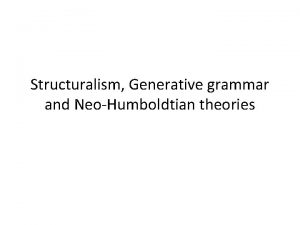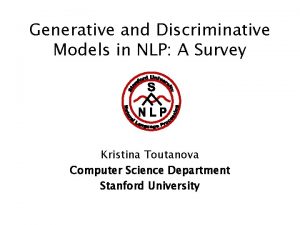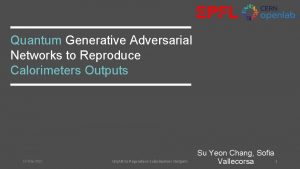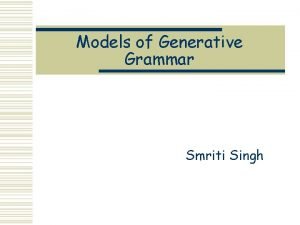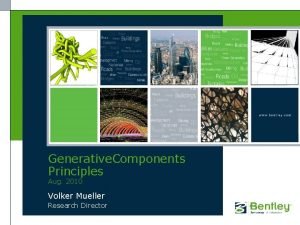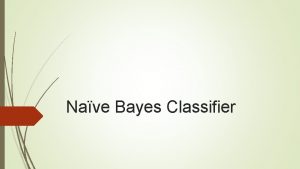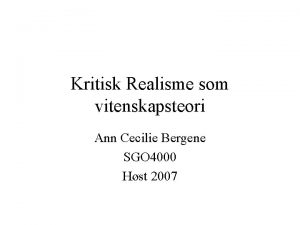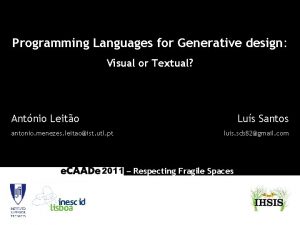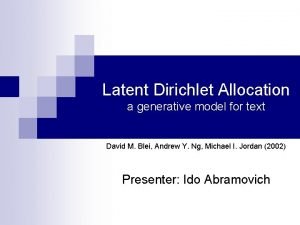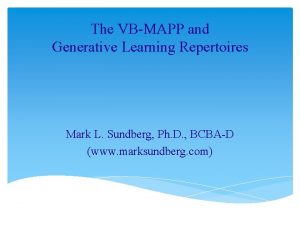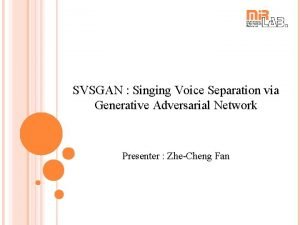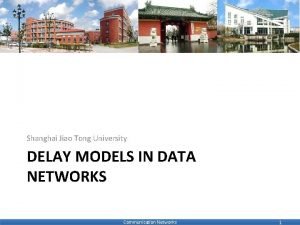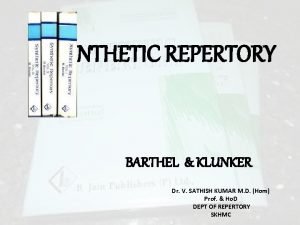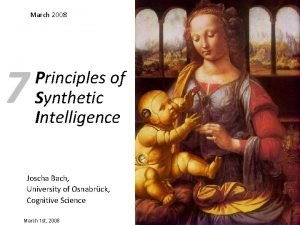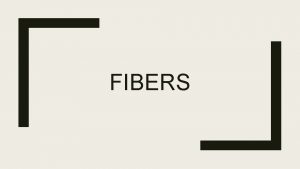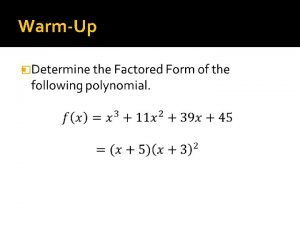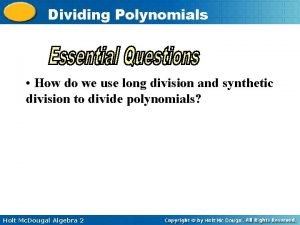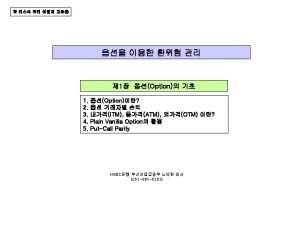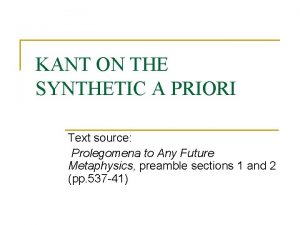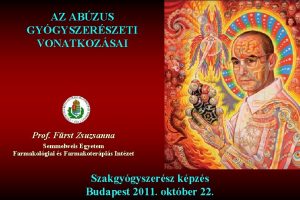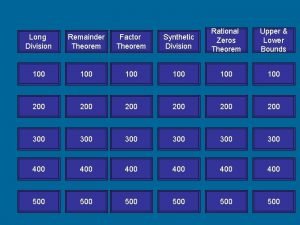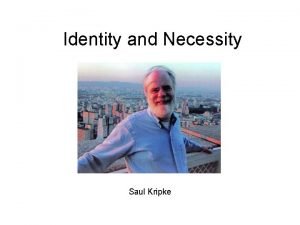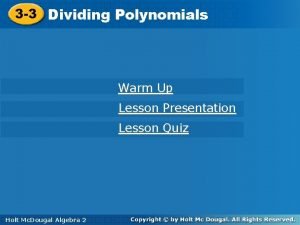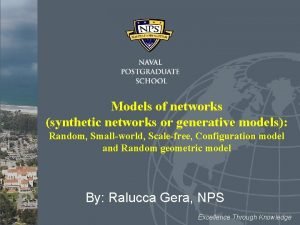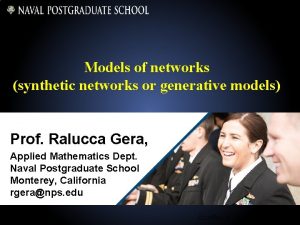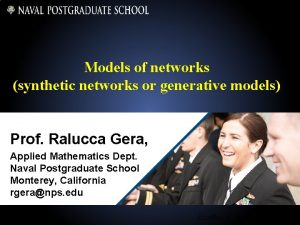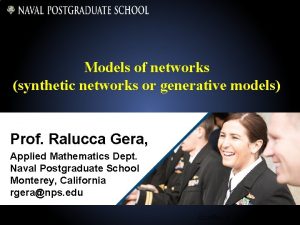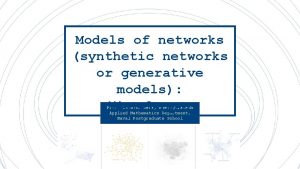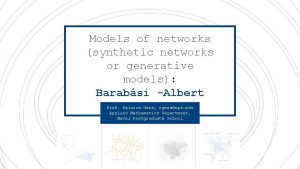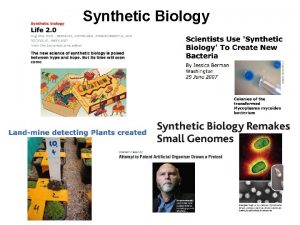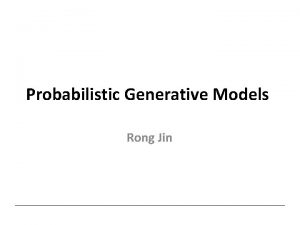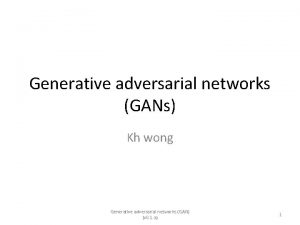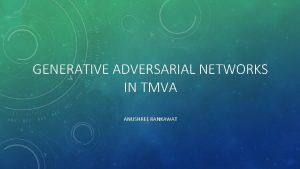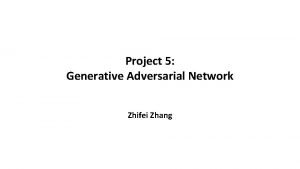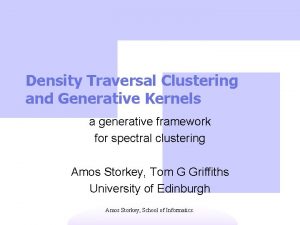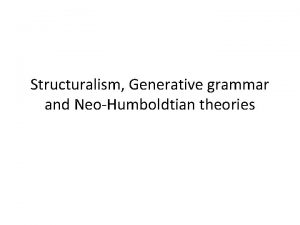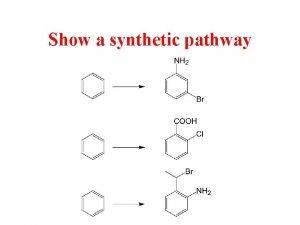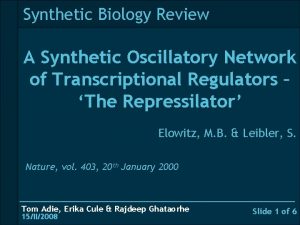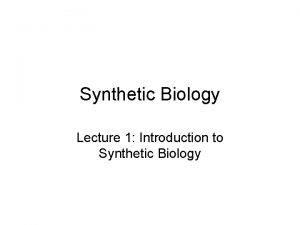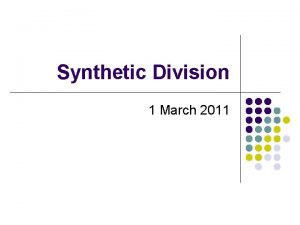Models of networks synthetic networks or generative models
















































- Slides: 48

Models of networks (synthetic networks or generative models): Random, Small-world, Scale-free, Configuration model and Random geometric model By: Ralucca Gera, NPS Excellence Through Knowledge

The world around us as a network • What do social networks look like? ØWatch this video • What categories do we have for networks? ØRandom networks (normal degree distribution) ØScale free (power-law degree distribution) 2

The three papers for each of the models • “On Random Graphs I” by Paul Erdos and Alfed Renyi in Publicationes Mathematicae (1958) Times cited: ∼ 3, 517 (as of January 1, 2015) • “Collective dynamics of ‘small-world’ networks” by Duncan Watts and Steve Strogatz in Nature, (1998) Times cited: ∼ 24, 535 (as of January 1, 2015) • “Emergence of scaling in random networks” by László Barabási and Réka Albert in Science, (1999) Times cited: ∼ 21, 418 (as of January 1, 2015) 3

Why understand the structure of networks? • Applications such as epidemiology: Viruses propagate much faster in scale-free networks. Vaccination of random nodes in scale free does not work, but targeted vaccination is very effective • Thus, we can create models that captures the structure which facilitates research: – Create fast networks of particular models can be quickly and cheaply generated, instead of collecting and cleaning the data that takes time – Promote understanding of the world around us: What effect does the degree distribution have on the behavior of the system?

Reference network: Regular Lattice • Source: http: //mathworld. wolfram. com/Circulant. Graph. html 5

Reference network: Regular Lattice Source: http: //mathworld. wolfram. com/Circulant. Graph. html 6

Reference network: Regular Lattice • The higher dimensions are generalizations of these. An example is a hexagonal lattice is a 2 -dimensional lattice: graphene, a single layer of carbon atoms with a honeycomb lattice structure. Source: http: //phys. org/news/2013 -05 -intriguing-state-previously-graphene-like-materials. html 7

ERDŐS-RÉNYI RANDOM GRAPHS

Random graphs (Erdős-Rényi , 1959) • 9

G(n, m) • To make a random network: take n nodes, m unlabeled edges, and put the edges down randomly between the n vertices • Put the graph in a box, make another one and put it in the box, and another one… • Pull one network at random out of the box and it will have a Normal Degree Distribution (classic degree distribution): almost everyone has the same number of friends on average 10

G(n, m) • 11

G(n, p) • To make a random network: – take n nodes, – A fixed probability p – Attach edges at random to the nodes, with the probability p 12

Degree distribution is Normal Both for G(n, p) and G(n, m) 13

Erdős-Rényi random networks • There might be some that are a bit different that don’t have this degree distribution, but there are so few of them, that you will not pull one out of this box • The universe doesn’t produce these (they are made by us, they are mathematically constructed) rather scale-free • We will construct them using Gephi and Network. X. For Gephi you will need the plug-in. We will practice with Network. X since there are more synthetic models and classes available in Network. X 14

Generating Erdős-Rényi random networks. • ER graphs are models of a network in which some specific set of parameters take fixed values, but the construction of the network is random (see below in Gephi) 15

Generating Erdős-Rényi 16

Generating Erdős-Rényi random networks Reference for python: http: //networkx. lanl. gov/reference/generated/networkx. generators. random_graphs. erdos_r enyi_graph. html#networkx. generators. random_graphs. erdos_renyi_graph 17

WATTS-STROGATZ SMALL WORLD GRAPHS (1998)

Small worlds, between perfect order and chaos the first graph is completely ordered (probability p =0), the graph in the middle is a "small world" graph (0 < p < 1), the graph at the right is complete random (p=1). Source: http: //www. bordalierinstitute. com/target 1. html 19

Small world models • Duncan Watts and Steven Strogatz small world model: a few random links in an otherwise structured graph make the network a small world: the average shortest path is short regular lattice: my friend’s friend is always my friend small world: mostly structured with a few random connections random graph: all connections random Source: Watts, D. J. , Strogatz, S. H. (1998) Collective dynamics of 'small-world' networks. Nature 393: 440 -442.

small worlds Small worlds – a friend of a friend is also frequently a friend (clustering coefficient) – but only small number of hops separate any two people in the world (small average path) Arnold Schwarzenegger. – thomashawk, Flickr; http: //creativecommons. org/licenses/by-nc/2. 0/deed. en

Generating Watts-Strogatz 22

Generating Watts-Strogatz networks http: //networkx. lanl. gov/reference/generated/networkx. generators. random_graphs. watts_strogatz_graph. html#networkx. generators. random_graphs. watts_strogatz_ graph 23

PREFERENTIAL ATTACHMENT MODEL (WE WILL CONSIDER THE BARABASI-ALBERT EXAMPLE)

Scale-free •

Power law networks number of nodes of that degree • Many real world networks contain hubs: highly connected nodes • Usually the distribution of edges is extremely skewed many nodes with small degree fat tail: a few nodes with a very large degree Degree (number of edges) no “typical” degree

But is it really a power-law? Log of number of nodes of that degree • log of the degree

Network growth & resulting structure • random attachment: new node picks any existing node to attach to • preferential attachment: new node picks from existing nodes according to their degrees (high preference for high degree) http: //projects. si. umich. edu/netlearn/Net. Logo 4/RAnd. Pref. Attachment. html

Scale Free networks • 29

Generating Barabasi-Albert 30

Generating Barabasi-Albert 31

Generating Barabasi-Albert networks http: //networkx. lanl. gov/reference/generated/networkx. generators. random_gra phs. barabasi_albert_graph. html#networkx. generators. random_graphs. baraba si_albert_graph 32

Modified BA • Many modifications of this model exists, based on: – Nodes “retiring” and losing their status – Nodes disappearing (such as website going down) – Links appearing or disappearing between the existing nodes (called internal links) – Fitness of nodes (modeling newcomers like Google) • Most researchers still use the standard BA model when studying new phenomena and metrics. Why? It is a simple model, and it was the first model that brought in growth (as well as preferential attachment) 33

The Malloy Reed Configuration model

The configuration model • A random graph model created based on Degree sequence of choice (can be scale free) • Maybe more than degree sequence is needed to be controlled in order to create realistic models 35

The Random Geometric model

Random Geometric Model • Again the connections are created at random, but based on proximity rather than preferential attachment (such as ad hoc networks) • Recall that BA was introduced based on the data obtained from the Web, where physical proximity is irrelevant. • But if one would want to model something like the Internet, then proximity is relevant • There is no perfect model for the world around us, not even for specific types of networks • No model has been introduced for the Internet 37

An example of a random geometric https: //www. youtube. com/watch? v=NUisb 1 -INIE 38

A zoo of complex networks

Random, Small-World, Scale-Free Scale Free networks: 1. High degree heterogeneity 2. Various levels of modularity 3. Various levels of randomness Man made, “large world”: 40 http: //noduslabs. com/radar/types-networks-random-small-world-scale-free/

Networks and their degree distributions We tend to characterize networks by their degree distributions: – Random graphs iff Poisson degree distribution – Scale free iff power-law degree distribution. But they are not! Rather: – If G is a random graphs, then G has Poisson degree distribution – If G is scale free, then G most probably has a power -law degree distribution. – If G was constructed using preferential attachment, then G has a power-law degree distribution. 41

Power-law graph number of nodes found 94 67 63 54 2 6 1

Poisson distribution number of nodes found 93 19 11 3 15 7 1

Power-law networks are robust to random breakdown

But are especially vulnerable to targeted attack • Targeting and removing hubs can quickly break up the network

In social networks, it’s nice to be a hub mike

But it depends on what you’re sharing…

Python • References to the classes that exist in python: http: //networkx. lanl. gov/reference/generators. html 48
 Oren freifeld
Oren freifeld Spectral normalization
Spectral normalization Generative adversarial networks
Generative adversarial networks Discriminative classifier
Discriminative classifier Theis reference
Theis reference Do deep generative models know what they don’t know?
Do deep generative models know what they don’t know? On unifying deep generative models
On unifying deep generative models Taxonomy of generative models
Taxonomy of generative models Generative recursion
Generative recursion Generative grammar examples
Generative grammar examples Generative thinking boards
Generative thinking boards Generative thinking definition
Generative thinking definition Structuralism to transformational generative grammar
Structuralism to transformational generative grammar Generative meditation
Generative meditation Deep and surface structure in linguistics
Deep and surface structure in linguistics Nlp generative model
Nlp generative model Quantum generative adversarial learning
Quantum generative adversarial learning Phrase structure rules
Phrase structure rules Generative type computer aided process planning
Generative type computer aided process planning Patrick hudson safety culture
Patrick hudson safety culture Bentley generative components
Bentley generative components Generative vs discriminative
Generative vs discriminative Generative linguistics and cognitive psychology
Generative linguistics and cognitive psychology Kritisk realisme definisjon
Kritisk realisme definisjon Generative design grasshopper
Generative design grasshopper Generative lymphoid organs
Generative lymphoid organs Lda generative model
Lda generative model Tacting noun verb combinations
Tacting noun verb combinations Singing
Singing Datagram networks
Datagram networks Backbone networks in computer networks
Backbone networks in computer networks Delay models in data networks
Delay models in data networks Difference between modal and semi modal
Difference between modal and semi modal Synthetic repertory pdf free download
Synthetic repertory pdf free download Principles of synthetic intelligence
Principles of synthetic intelligence Tabby fibers forensics
Tabby fibers forensics Synthetic organic polymers
Synthetic organic polymers Synthetic substitution definition
Synthetic substitution definition Theory of emulsion
Theory of emulsion When to use long division or synthetic
When to use long division or synthetic Synthetic wave
Synthetic wave Option 1 2 3
Option 1 2 3 Synthetic dividend
Synthetic dividend Synthetic audio
Synthetic audio Synthetic a priori judgments
Synthetic a priori judgments Vásárlás synthetic cocaine
Vásárlás synthetic cocaine Remainder theorem synthetic division
Remainder theorem synthetic division Synthetic statement example
Synthetic statement example Synthetic division steps
Synthetic division steps

